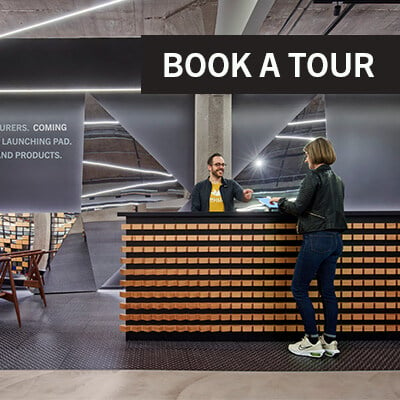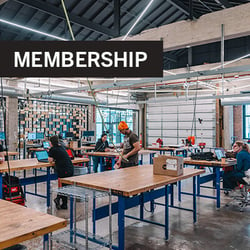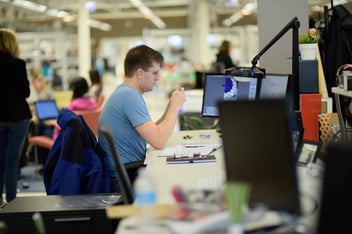What One Fracture Revealed to a Son, a Researcher, and Now a Founder
A broken hip isn’t just time off your feet—it’s often the beginning of a long, painful journey. For many older adults, it's a turning point from which they never fully recover. Nearly half lose their independence. One in four dies within a year. The fracture is only the beginning.
Marcel Maroist, a longtime health researcher and entrepreneur, experienced the harsh reality of bone fragility with someone closest to him—his mother, Lucille.
At 71, Lucille fractured her hip. She had only fallen two feet—just slipping out of bed—but the consequences were severe. The fall resulted in a broken hip, followed by surgery. Days later, she still wasn’t back on her feet. That’s when the doctors warned the family: if she didn’t begin to mobilize soon, her health could take a serious and possibly irreversible turn.
That moment changed how Marcel thought about bone health. It wasn’t just about treating an injury—it was about preserving independence, quality of life, and in many cases, survival.
Lucille was one of the lucky ones—she made a full recovery. But the experience revealed something Marcel couldn’t ignore: recovery from a hip fracture is steep, slow, and uncertain. And for many, it comes too late.
The statistics are staggering:
- One in four people who suffer a hip fracture dies within a year.
- One life is lost every 13 seconds due to fracture-related complications.
- Osteoporosis is often the silent threat—1 in 3 women and 1 in 5 men over the age of 50 will suffer an osteoporosis-related fracture in their lifetime.
What if we could prevent the true danger behind falls—not the fall itself, but the fracture?
A Discovery Born from the Lab and Personal Experience
Around the time of his mother’s fall, Marcel was leading a project focused on electrical stimulation for aesthetic applications. During a 10-week trial involving 48 women, something unexpected occurred: with just three hours of weekly stimulation, participants experienced an average bone growth of 2.01%, supported by a statistically significant p-value of 0.013.
This surprising outcome led Marcel and his team to investigate further. They discovered that specific stimulation patterns were activating ion channels that regulate osteoblasts, enabling calcium deposition in bone cells—mimicking the body’s natural bone-building process without the need for drugs or surgery. “At first, we thought it was a coincidence,” Marcel recalls. “But the results kept repeating.”
Originally developed for aesthetic use, the device had unintentionally revealed its potential to increase bone mass. This shifted the team’s focus entirely, prompting a deep analysis of trial data, a comprehensive literature review, and a series of preclinical studies—all of which confirmed the promise of their findings.
What began as a chance observation evolved into OSTAAT™—One Stimulation At A Time: a non-invasive smart clothing device designed to stimulate bone growth, reverse osteoporosis, and reduce fracture risk.

Designing a Device That Meets People Where They Are
Marcel began developing a wearable device that could deliver this stimulation safely, consistently, and without disrupting a person’s life. The result is the shorts OSTAAT™, a smart clothing that delivers low-intensity signals to targeted hip bones most vulnerable to fracture.
The goal was simple but essentially make it something people would actually use.
“It was important that the device didn’t feel clinical or complicated,” Marcel explained. “We designed it to fit into daily routines, not as a medical burden but as something that just makes sense.”

Building with Families in Mind
KAT Innovation has filed international patents, validated its core technology through in vitro and ex vivo studies, and raised over $1 million through grants and early-stage investment in its Canadian based company. The team is preparing to launch a pilot clinical trial in partnership with U.S. and Tunisian physicians, while also developing a wellness-market version of the device to gather early user feedback.
The work is methodical and deliberate, focused on clinical rigor, patient experience, and long-term impact.
“We’re not selling hype,” Marcel said. “We’re creating a real tool for people who are facing a very real problem. This isn’t about novelty. It’s about giving patients and families more control, more peace of mind, and better options than what currently exists.”
A Strategic Partnership for the Next Stage
To support the next phase of development, KAT Innovation joined the mHUB MedTech program. “mHUB was exactly what we needed,” Marcel said. “They have the tools, the talent, and the environment to help us move from prototype to product. It’s not just theory. It’s execution.”
While the smart clothing is being further developed, I’m focusing on creating a belt-based MVP to be used in the upcoming clinical trial. This streamlined version will allow us to validate the core technology in a practical, controlled setting.
At mHUB, I’m refining the belt’s form factor, preparing regulatory materials for FDA engagement, and laying the groundwork for broader clinical adoption. This MVP is a critical step toward delivering the full smart clothing solution.

What Comes Next
While OSTAAT™ is the first product, the team sees long-term opportunities to support recovery from fractures and other conditions that impact bone integrity. For now, the focus remains on building something that works and reaching the people who need it most.
“There are too many cases where the injury leads to irreversible loss of independence,” Marcel said. “Our goal is to intervene earlier and give people a better chance to maintain their mobility and quality of life.”
That goal is what drives the work forward. “This project started in a hospital room. It became personal long before it became technical,” he said. “We’re building something useful because the need is real—and because too many people are still going without better options.”
Learn more about how mHUB supports early-stage medical device companies
mHUB has supported over 1,200 innovators by providing a hyper-resourced environment with the goal of commercializing new hardtech innovation. The mHUB community has generated more than $1.96B in revenue, launched more than 1,700 products, hired more than 6,800 employees, and raised over $2.02B in capital. To date, mHUB has invested in 54 startups across smart manufacturing, energy tech, and medtech.
Learn more about their MedTech accelerator program and venture capital fund, mHUB Ventures.





